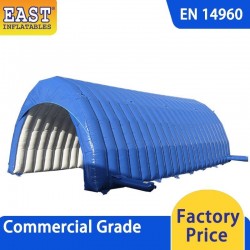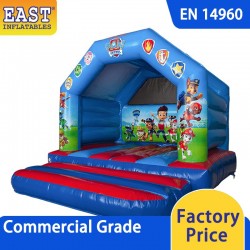
Inflatable castles, also known as bounce houses or bouncy castles, have gained immense popularity as entertainment attractions for events and gatherings. These vibrant, air-filled structures often find their place on grassy areas, offering children and sometimes even adults a chance to bounce around and have fun. However, a common concern that arises is whether setting up an inflatable castle on the grass will cause any damage. This article aims to explore this question and provide insights into the potential effects on both the inflatable castle and the grass underneath.
Impact on Inflatable Castles
Inflatable castles are designed with durability in mind. They are typically made from strong, resilient materials like reinforced PVC or vinyl. These materials can withstand the pressure and movement of bouncing individuals without easily tearing or puncturing. As a result, the likelihood of an inflatable castle getting damaged purely from being set up on grass is relatively low.
Nevertheless, proper setup and usage are essential to ensuring the inflatable castle remains undamaged. Sharp objects, rough terrain, or improper anchoring can contribute to punctures or tears. Before setting up the inflatable castle, it's crucial to clear the area of any sharp debris or objects that could potentially cause harm. Additionally, ensuring that the castle is securely anchored according to the manufacturer's guidelines helps prevent unnecessary stress on the material.
Impact on Grass
While inflatable castles are built to withstand grassy terrain, the grass itself might be more susceptible to damage. The weight and constant motion of individuals jumping and playing on the inflatable can compress the grass underneath. This compression might lead to temporary discoloration or flattening of the grass. However, healthy grass should bounce back over time, especially if the use of the inflatable castle is infrequent.
In cases where the inflatable castle is set up for extended periods, such as at amusement parks or during events that last multiple days, the potential for more noticeable grass damage increases. The constant pressure can result in the formation of bare patches, compacted soil, and reduced grass growth. To mitigate these effects, event organizers can consider rotating the location of the inflatable or implementing protective measures like using ground covers or mats underneath the castle.
Preventive Measures
To ensure minimal damage to both the inflatable castle and the grass, several preventive measures can be taken:
Clear the Area: Remove any sharp objects, rocks, or debris from the setup area to prevent punctures.
Proper Anchoring: Follow the manufacturer's guidelines for anchoring the inflatable securely to prevent unnecessary movement.
Rotate Locations: If possible, change the setup location periodically to distribute the impact on the grass.
Use Ground Covers: Place protective mats or ground covers under the inflatable to minimize grass compression and wear.
Conclusion
In conclusion, while setting up an inflatable castle on grass may not necessarily cause significant damage to the structure itself, it's essential to consider the potential impact on the grass underneath. By taking proper precautions, such as clearing the area, anchoring correctly, and using ground covers, both the inflatable castle and the grass can coexist harmoniously. Remember that the occasional use of an inflatable castle is unlikely to cause long-term harm to healthy grass, but responsible setup and usage practices should always be observed.




Leave a Comment